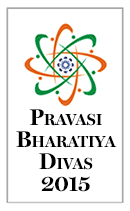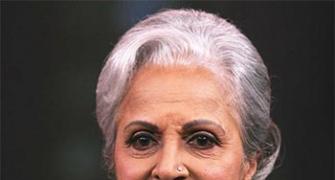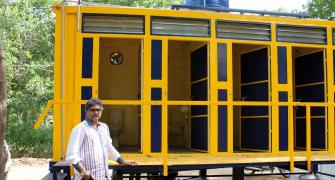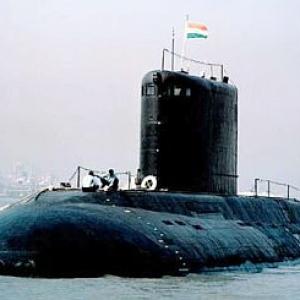
‘India today has to fight many a battle, all of which cry out for innovation. This is where the experience of the Diaspora could be the most productive well-spring,’ says Shreekant Sambrani.
As India gears up to honour its pravasis to mark their contribution in the nation’s development, Rediff.com presents different perspectives on the Diaspora.
Earlier in the series:
George Joseph: A look back in anxiety
T P Sreenivasan: The coup that changed India’s Diaspora policy
I seek the indulgence of readers to begin these musings on the Pravasi Bharatiya Divas on a personal note.
I went to the United States 50 years ago come September, fresh out of the Indian Institute of Technology-Bombay, among the first of the tribe of IIT engineers to head westward.
In the six years I spent in the land of milk and honey before returning to Bharatmata -- also among the first IIT graduates to do so -- over two-thirds of my classmates had followed the same path.
Most of them are still there, now American citizens well into their retirement.
The milieu we faced as young graduate students bears scant resemblance to the reality now.
Asian Indians were rare, and could not be recognised as a separate group.
On my very first day in New York, I was berated as a Black brother not contributing to (African-American religious leader) Elijah Muhammad’s cause (I had to hold on to what few greenbacks I was allowed by my gracious government).
Later in Evanston, Illinois, when someone managed to get some sprigs of fresh coriander from Kalustyan’s in New York, still a Turkish emporium, it was feast time for us bachelors dying for home food.
NRI, PIO, OCI, were just sets of alphabets with a common I.
Green Cards were to be had for the asking. I got mine in 1970 simply to avoid weekly solicitous calls from the Immigration and Naturalization Service worried about the state of my marriage (my wife had one, but I did not).
We were a small bunch, the target of much curiosity.
Unfortunately, our arrival in the US coincided with the great droughts of 1965 and 1966, and the PL 480 ((which enabled food-deficit 'friendly countries' to purchase US agricultural commodities with local currency, thus saving foreign exchange reserves and relieving US grain surpluses) funded ship-to-mouth existence India had to suffer.
Paul Ehrlich of Stanford wrote The Population Bomb. He became a star media personality with his dire doomsday predictions of millions, if not hundreds of millions, would die of starvation in Asia, even as India was already embarked upon the Green Revolution to prove him wrong. The new prime minister, Indira Gandhi, came to visit, but we were too few and too poor to stage a Madison Square Garden extravaganza to welcome her; and too insignificant for her to call us for a breakfast meeting.
The new prime minister, Indira Gandhi, came to visit, but we were too few and too poor to stage a Madison Square Garden extravaganza to welcome her; and too insignificant for her to call us for a breakfast meeting.
But those halcyon days have a far greater significance.
Indians have been emigrating for centuries, but were never of much significance, leave alone worthy of honour, in their chosen destinations. They were the much despised dukuwallahs in East Africa or Sammies in South Africa, coolies in the Caribbean, the descendants of indentured labourers.
The Blighty (British) had seen a large influx of Pakis (the generic pejorative term for all South Asians) running its textile mills in Bradford and crowding Southall.
The few WOGs were well assimilated in the British society, which did not yet have Chicken Tikka Masala as its national dish.
In fact, Veeraswamy’s -- the one large Indian eatery in London -- turned away visiting Indians who did not know that ties and jackets were needed to enter its hallowed precincts.
In the US, Sikh farmers were known in California, but elsewhere it was news that Indians could speak English, leave alone be good engineers.
My classmates and their cohorts from other IITs in the late 1960s all had distinguished careers that helped fashion the heyday of the American age of technology, though many did not become rich or famous.
But they performed a far more vital function. They were the ladder on which later generations of engineers climbed to the top of their professions and broke the glass ceilings.
The rapid ascendancy of Americans of Indian origin would not have been possible but for the sterling role played by the pioneering engineers (and doctors).
One of the major pitches Prime Minister Narendra Modi made in his US visit was for Non-Resident Indian participation in rebooting India’s march to economic progress.
Many would equate this with an appeal to the resource-rich to invest in India. Inflows of funds from all sources are welcome at all times, but that interpretation would be too limited.
India is no longer in a situation of the driblet of homeward remittances of the artisans toiling in the Gulf countries being its lifeline when it was choked by a rising deficit of payments.
Foreign institutional and direct investors now have India on their radars. The NRI investments are thus not critical to India’s growth.
Making in India, either for the domestic or for the export markets, is another area where NRI initiative could be thought useful.
But that path as yet is not obstacle-free, certainly not for individual entrepreneurs from abroad.
When the promised red carpet is finally rolled out and India is seen to possess a degree of competitiveness, not much exhortation would be needed for even larger corporate entities to rush to India.
So what can the Indian Diaspora do presently?
A little reflection would show that as a community, recent Indian emigrants to all corners overcame the dearth of capital and opportunities through intellect and innovation.
The much-abused phrase, thinking out of the box, is the hallmark of Indians, be they backroom traders with jugaad designs to get rich quick, scientists sending a Mars landing mission on a shoestring budget, computer geeks in Silicon Valley or Bengaluru, technocrats in Fortune 500 corporations or metallurgy colossi straddling the global steel and non-ferrous metals scene.
A quick glance at Indian history of the last 30 years will show how seemingly innocuous ideas can revolutionise the chain of events.
In 1985, Prime Minister Rajiv Gandhi invited Satyam Pitroda, a self-made telecommunications entrepreneur of Chicago, to advise him.
Many may contend that Pitroda’s simple switch was no great shakes, but it wrought wonders in connecting India.
In no time at all, district towns were all hooked up.
Concessionaire-run call booths mushroomed.
With falling tariffs, telephony was within everybody’s reach.
Just around that time, my friend Kirit Bakshi of Detroit brought personal computers to India ahead of any large sellers. He also set up a chain of centres to impart training for programming and computer languages.
Due to the cussedness of unworthy partners, he had to return, but he set India firmly on the path of extensive computer competency.
Between him and Pitroda, India was poised to take advantage of the Y2K opportunity.
The rest, as they say, is history of India’s blooming as an IT giant.
There is no gainsaying the innate abilities of the likes of Pitroda and Bakshi.
But in the hidebound Indian economic environment, their talents would likely have died unnatural deaths.
Their sojourn abroad gave them two advantages: Their self-confidence and can-do spirit for one, and their acceptability in India for another.
India today has to fight many a battle, all of which cry out for innovation. This is where the experience of the Diaspora could be the most productive well-spring. One example will suffice.
The cleaning up of the Ganga is the project closest to the prime minister’s heart.
Countless billions have been poured literally down that drain over the last three decades, with the iconic river becoming ever more polluted.
In this very period, the US has had outstanding success in cleaning up its water bodies and rivers.
The US Agency for International Development has provided generous financial and advisory assistance to numerous countries engaged in similar efforts. Its chief advisor in many such projects with an outstanding track record is another friend, Chicago-based Dr Ashok Lagvankar, the doyen of his profession.
That is the source India needs to tap, not necessarily the money.
Good ideas are like forest fires. They spread on their own and become all-consuming.
India can certainly use them to build smart cities, a string of ports or providing affordable medical care to everyone, all priority concerns of this government and others to come in the foreseeable future.
Without a doubt there is a wealth of experience and information among Indians abroad on these and other related issues.
Relevant data and personnel need to be pooled, collated and offered to advise or execute concerns of their competence.
Incubation of budding talent in India also needs to be taken up, so that the process becomes gradually more internalised.
The US has organisations that claim to be friends of a party or a community in India.
Can we not have one that takes up these multifarious tasks and becomes the friend of the largest grouping of all, India itself?










